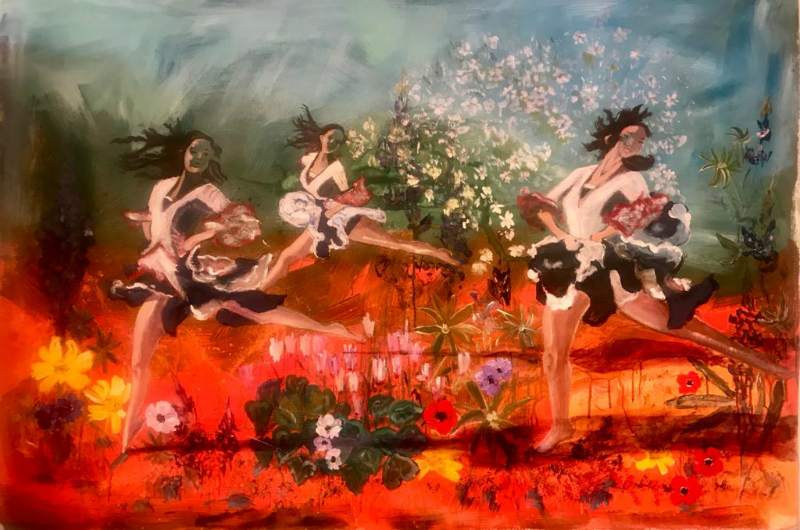It’s not often that a several-century-year-old text gets a revamp, but in an effort to make their family Passover seder more engaging and inclusive, Paul and Brenda Hoffert decided to rewrite the Haggadah.
The Toronto-based couple hosts 25-35 people every year for their annual seder. For many years, they struggled to find a Haggadah they truly connected with and expressed their views. The Hofferts would often hold plays about the Exodus where their young grandchildren could perform, and tried using different Haggadot for their seders.
However, three years ago, the Hofferts decided to create their own Haggadah, which they called the “New Hoffert Haggadah,” with the goal of making it more readable for younger generations, and more universal in its approach. It was a family project that involved a great deal of research about the different kinds of Haggadot from various Jewish denominations.
“We are of the opinion that the archaic English language that is frequently found in translations from the original text, and the stilted English language that’s sometimes used in the more modern English texts, is a barrier to inclusion,” said Paul Hoffert. “The main thing that Brenda and I undertook was to do new translations in English. Our English was very colloquial, and we have taken liberties in keeping to the more reform end of Judaism, and with our own Humanistic ideals.”
Hoffert said their Haggadah starts with the message that the Passover story is not only meant for those who believe the Torah is true, but also for those who simply believe the Bible is an important historic document that has many lessons that are still relevant today.
“We’re trying to be more inclusive for our family,” said Paul Hoffert. “There are many families with individuals who have different levels of observance and belief, but everyone wants to come together at the seder and sing songs and connect with their Jewish heritage.”
Throughout the last three years, the Haggadah has undergone a number of changes as the Hofferts received feedback from their family. “In our first year, we left out a few aspects of the story, in order to shorten it,” said Brenda Hoffert. “Interestingly, it was our grandchildren who requested that we have the full story, and include more Hebrew throughout the seder.”
The Hofferts don’t have plans to publish their Haggadah as a commercial work, and if they do, they would not monetize it. Currently, they don’t print more than 35 copies for their seder, but are willing to share a PDF of their Haggadah for those interested.
This year’s edition of the New Hoffert Haggadah was illustrated by fine artist and clinical psychologist, Esther Gelcer. Her paintings, along with some passages of the Hoffert Haggadah, were set to be exhibited on April 1 and throughout Passover at Congregation Habonim, but it has been postponed until further notice due to COVID-19.
For Gelcer, who lives between Toronto and Israel, the Israelites’ transition from slavery to freedom is represenative of the psychotherapeutic process.
“It’s a story of a people who were enslaved, tortured, and abused, and were then freed,” said Gelcer. “But it’s not so simple – there are stages, and there are a lot of parallels to psychotherapy.”
Gelcer explained that people who come to therapy sessions are suffering from issues that entrap them in their own minds, and it is the function of the therapist to “show them the way.” Throughout the therapeutic process, people begin to free themselves of negative thoughts and mental blocks, and by the end, they feel free and are able to make their own choices.
“When people are exercising choices, that’s when I know they’re ready to go,” said Gelcer. “This relates to the Passover story because the Israelites had to be in the desert for 40 years, until a whole new generation was born into freedom.”
Gelcer created 16 acrylic paintings for this Haggadah, all of which relate to the Passover story. She said she didn’t want to paint biblical scenes, so the paintings are her own interpretations of the story. One painting is of women Gelcer saw dancing on the beach in Tel Aviv, surrounded by Israeli wildflowers that come out every spring. “Passover is the holiday of spring and rebirth,” said Gelcer. “It marks the ending and beginning of something – the end of winter and start of spring, as well as the end of slavery and beginning of freedom.”










